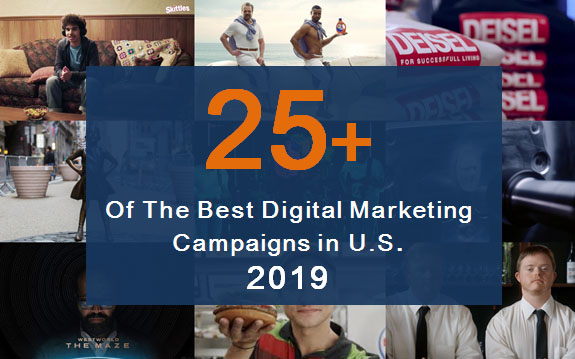Track Like a Hawk – Part 2: 10 Digital Marketing Metrics & KPIs to Monitor in 2019
Digital Marketing | Feb 28, 2019
Welcome back to the second part of the “Track Like a Hawk” series. We’re gonna start this part with this situation…
Imagine you’re sitting at your desk working on your own digital marketing campaign when the CEO passes and asks you what seems to be an innocent question: “How do we know if our digital marketing campaign is working?”
That question sounds simple. After all, if people are interacting with ads or sales increased, then the campaign is working, right? But the CEO went further on the question and says this: “I want to know that if we spend a dollar (or euro, or whatever) on a digital marketing effort, that we generate three, four, or five on the back end.”
Would you know how to answer that question? In other words, would you be able to tell your CEO that your digital marketing campaign is generating a positive return on investment (ROI)? 😕 😕
If the answer is no, don’t be nervous, you’re not alone. According to “The CMO Survey of 2018“, over 63% of the CMOs surveyed claimed that they can’t quantitatively prove the short-term impact of their marketing spends.
This question will generate many other questions in your mind:
- How Can I Measure My Digital Marketing Efforts?
- How Can I Unravel Digital Marketing Measurement?
- How Can I Choose Effective Digital Marketing KPIs and Metrics?
- Generally, How Can I Spot Success if I Don’t Even Know What Success Looks Like?
The good news is that I’m here to change all of that. By providing some basic knowledge and by tracking a few metrics, you can start to calculate the ROI of both digital marketing and social media marketing campaigns.
Ready to be a hawk and put your thinking cap on? If so, let’s get started.
But first,
If you missed the first part of the “Track Like a Hawk” series, check it NOW!
The Most Important Digital Marketing KPIs to Track in 2019
Key performance indicators (KPI’s) are measurements put in place to evaluate the success of a particular goal or activity. A KPI is a measurable value that describes how effectively a company is in achieving the key business objectives.
While each business will undoubtedly have its own custom needs, here are some great, mainstream metrics across digital marketers everywhere:
- Digital Marketing Return on Investment (ROI)
- Conversion Rate
- Cost Per Click (CPC)
- Cost Per Acquisition (CPA)
- Cost Per Conversion (CPCon)
- Cost Per Lead (CPL)
- Revenue per Lead (RPL)
- Click Through Rate (CTR)
- Email Click-Through Rate (E. CTR)
- Cost Per Install (CPI)
1. Digital Marketing Return on Investment (ROI)
What Is It?
ROI is the most significant KPI for digital marketers. Simply it effectively answers the question, “Is this digital stuff even working?” Not surprisingly, this is also one of the most difficult questions to answer. To calculate digital marketing ROI or even social media marketing ROI, you should be able to directly attribute new sales to your digital marketing efforts. Failure to measure ROI is one of the top reasons that CMOs get fired, marketing departments and agencies get restructured.
How Can You Calculate Digital Marketing ROI?
Digital Marketing ROI = (Total Revenue Attributed to Digital – Total Cost of Digital Marketing)/(Total Cost of Digital Marketing)
2. Conversion Rate
What Is It?
Conversion is when users complete any desired action, such as signing up for a trial, creating an account, filling out a form, clicking a download button, downloading an ebook, etc. Generally, conversion is the number of anonymous visitors who become known records in your marketing database. You need to monitor the conversion because there’s no benefit in doubling website traffic if your conversion rate gets cut in half.
How Can You Calculate Conversion Rate?
Conversion Rate = (Conversions / Total Visitors) * 100%
Click Conversion Rate = (Converting Visitors / Total Visitors) * 100%
3. Cost Per Click (CPC)
What Is It?
It is an important metric to understand when analyzing the performance of any digital marketing campaign and arbitraging opportunities. CPC reflects the amount you pay for each individual click.
How Can You Calculate Cost per Click (CPC)?
Cost per Click (CPC) = (Cost of Ad)/(Total Number of Clicks)
4. Cost Per Acquisition (CPA)
What Is It?
Cost per Acquisition (CPA) refers to the average marketing and sales cost of each new customer for your business. This metric can determine your digital marketing efforts’ fate.
This metric is usually used when your objective is to acquire a customer as done by many e-commerce websites who see the benefit of the lifetime value of a newly acquired customer, rather than the profit made by only one sale.
How Can You Calculate Cost per Acquisition (CPA)?
Cost Per Acquisition (CPA) = (Total Ad Spend) / (Total Attributed Conversions) OR
Cost Per Acquisition (CPA) = (Marketing Costs + Sales Costs) / $ of New Customers
5. Cost Per Conversion (CPCon)
Cost per Conversion (CPCon) is more generic. A conversion can be anything you deem it to be (e.g. a lead, a sale, downloading something, filling a form, someone signing up to your newsletter, etc.)
This metric can also be useful if you’re running an e-commerce website where users can add something to a cart and convert them then and there. So, this metric determines how much it costs to convert a site visitor into an actual sale.
What Is It?
Cost Per Conversion is related to your individual business model, and often to your individual campaign.
How Can You Calculate Cost per Conversion?
Cost Per Conversion = (Cost)/(Conversions) or
Cost Per Conversion = (Cost per Click)/(Conversion Rate)
6. Cost per Lead (CPL)
What Is It?
The number of leads alone doesn’t identify a successful digital marketing campaign. You need to keep lead acquisition costs low so you can keep healthy margins and see significant growth. By measuring cost per lead (CPL) for different web sources, you can focus mainly on digital activities that will bring you the most profitable and reinvest your marketing dollars accordingly.
How Can You Calculate Cost per Lead (CPL)?
Cost per Lead (CPL) = (Total Spent on Campaign)/(Total Number of Leads)
[Note: do this for each source of leads].
7. Revenue per Lead (RPL)
What Is It?
On the other side of Cost per Lead, you need to measure the approximate sales value of each new lead. This measurement will help you predict future sales based on the expected traffic and conversion rates. It will help you identify where your most profitable leads are coming from so you can reinvest in those channels.
How Can You Calculate Revenue per Lead?
Revenue per Lead (RPL) = (Total Attributable Revenue)/(Total Number of Leads)
[Note: do this for each source of leads].
8. Click Through Rate (CTR)
What Is It?
Click-through rate (CTR) is a primary metric in pay-per-click (PPC) ads that can help you gauge the results you’re getting your relevance score, and how effective your digital campaigns are. This metric can be applied to email marketing as well as paid ads.
How Can You Calculate Click Through Rate (CTR)?
Click Through Rate (CTR) = (Clicks) / (Impressions)
9. Email Click-Through Rate (E. CTR)
In case you’re running an email marketing campaign, The email click-through rate (Email CTR) metric shows the engagement of your target audience. If we said that the email open rate tells how many people think that your email is worth their attention, then the email click-through rate tells whether your email can nudge them into real action.
How Can You Calculate Email Click Through Rate (E. CTR)?
Email Click-Through Rate = (Number of Clicks)/(Number of Delivered Emails) x 100
The email open rate is also a leading indicator of the success of your email marketing campaign. It measures the number of particular interactions with an email server after sending an email expressed as a percentage of the non-bounce total.
To calculate the email open rate use this formula:
Email Open Rate = (Emails Opened)/(Emails Sent – Bounced Emails)
10. Cost Per Install (CPI)
Cost Per Install (CPI) is one of the most significant metrics for mobile app owners to measure. This metric basically measures your paid installs in contrast to organic installs. For businesses that extend their existing business on mobile, the cost per install is an important indicator of investment they need to use to include mobile into the mix of channels they use to reach out to their targeted customers.
How Can You Calculate Cost Per Install (CPI)?
Cost Per Install (CPI) = (Total Ad Spend)/(Total Installs)

10 Digital Marketing Metrics & KPIs to Monitor, Plus Formulas to Calculate Them
Conclusion
While all of these metrics / KPIs are very useful in tracking your progress and proving the effectiveness of your digital marketing campaigns, they are actually useless if you don’t use them to make educated decisions about your objectives, strategies, and tactics.
Remember, you must learn which factors will influence each of these metrics / KPIs so that you can keep optimizing and improving your digital marketing efforts. Also, remember that not every metric matters to every campaign.
Once you set your digital marketing plan and identified your main KPI’s and metrics, you need to identify a tool to help you measure each of your KPIs – for instance, will you use Google Analytics to measure your conversions, or use your individual social media analytics to track engagement or any other tool (e.g. BuzzSumo) to assess the success of your content marketing.
This is what our third part of the “Track Like a Hawke” series talking about. Arm your digital marketing strategy and check the third and last part of our series.





